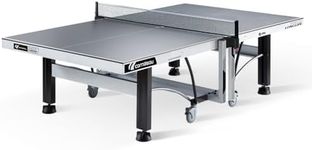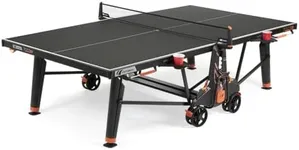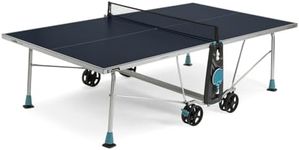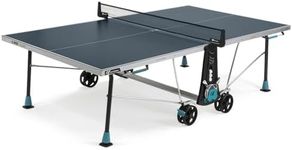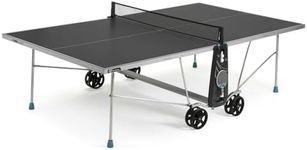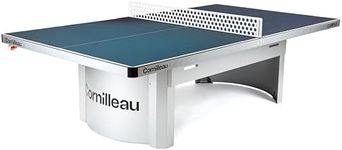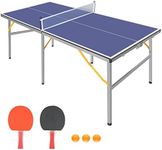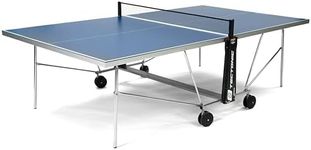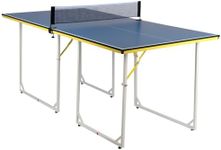Buying Guide for the Best Outdoor Ping Pong Table
Choosing the right outdoor ping pong table involves considering several factors that will ensure you have a durable, weather-resistant, and enjoyable playing experience. Outdoor tables are designed to withstand the elements, but they come in various sizes, materials, and features that can affect your playing experience. Understanding these key specifications will help you make an informed decision based on your specific needs, whether you're a casual player or a serious enthusiast.Table MaterialThe material of an outdoor ping pong table is crucial because it determines the table's durability and resistance to weather conditions. Common materials include aluminum, melamine, and composite materials. Aluminum tables are lightweight and rust-resistant, making them easy to move and maintain. Melamine tables are known for their excellent weather resistance and consistent bounce. Composite materials offer a balance of durability and playability. Consider how often you'll use the table and the typical weather conditions in your area when choosing the material.
Table ThicknessTable thickness affects the quality of play, particularly the bounce of the ball. Outdoor tables typically range from 4mm to 9mm in thickness. Thinner tables (4-5mm) are more affordable and suitable for casual play, but they may not provide the best bounce. Medium thickness (6-7mm) offers a better playing experience and is suitable for regular use. Thicker tables (8-9mm) provide the best bounce and are ideal for serious players who want a professional feel. Consider your level of play and how much you value a consistent bounce when selecting table thickness.
Frame and UndercarriageThe frame and undercarriage provide stability and support to the table. They are typically made from steel or aluminum. Steel frames are sturdy and provide excellent support, but they can be heavier and prone to rust if not properly treated. Aluminum frames are lighter and rust-resistant, making them easier to move and maintain. If you plan to move the table frequently or store it during certain seasons, a lighter frame might be more convenient. For permanent setups, a heavier frame can offer more stability.
Weather ResistanceWeather resistance is a key factor for outdoor tables, as they need to withstand rain, sun, and temperature changes. Look for tables with UV-resistant coatings to prevent sun damage and warping. Waterproof surfaces are essential to prevent water damage and ensure longevity. If you live in an area with harsh weather conditions, prioritize tables with high weather resistance to ensure they last longer and maintain their playability.
Portability and StoragePortability and storage features are important if you need to move the table or store it when not in use. Tables with wheels and foldable designs are easier to transport and store. Consider the size and weight of the table when folded, as well as the ease of folding and unfolding. If space is limited, a compact, easily foldable table will be more convenient. If you have ample space and plan to keep the table set up, portability may be less of a concern.
Playback FeatureThe playback feature allows one half of the table to be folded up, enabling solo practice. This is a useful feature for players who want to practice alone and improve their skills. Not all tables have this feature, so if solo practice is important to you, look for tables that offer it. Consider how often you plan to play alone and whether this feature will enhance your playing experience.
